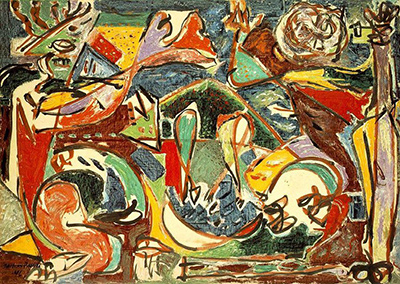Unlocking Jackson Pollock: The Key
"The Key" by Jackson Pollock was originally painted in 1946 as an oil on canvas. It is thought that the painting was titled "The Key" in order to signify a new emerging field of American Artwork at a time of European dominance in the art world.
Incidentally Pollock's later paintings were untitled and identified by number only.
"The Key" is part of Pollock's Accabonac Creek series of paintings. The creek could be seen from the barn at the home he shared with his wife Lee Kransner, in East Hampton.
This piece was painted in a bedroom and took up most of the floor space. Pollock would work on a canvas laid on the floor. He could apply his paint and view his art from all directions which facilitated his "all over style" of painting.
Pollock also felt strongly that the action of painting was the most important objective rather than the result itself. Once the barn had been cleared and relocated, Pollock used it as his studio to create his big paintings and develop his techniques.
In "The Key" which preceded his "drip" paintings, the viewer can see formed images and more structure in their placement. His "all over style" gives no clear focal point but there is an expressive energy apparent in the image.
As well as the white, orange and black that Pollock favoured, this painting includes more colour than others and was possibly influenced by Matisse's work. Pollock struggled with alcoholism and his previous Jungian therapy may have influenced some of the imagery that appears in these early paintings along with influences from his knowledge of Indian Sand Painting.
This outstanding piece of abstract expressionism is both striking and intriguing. Viewed from any angle, this incredible Pollock print will continue to challenge and charm the viewer.




